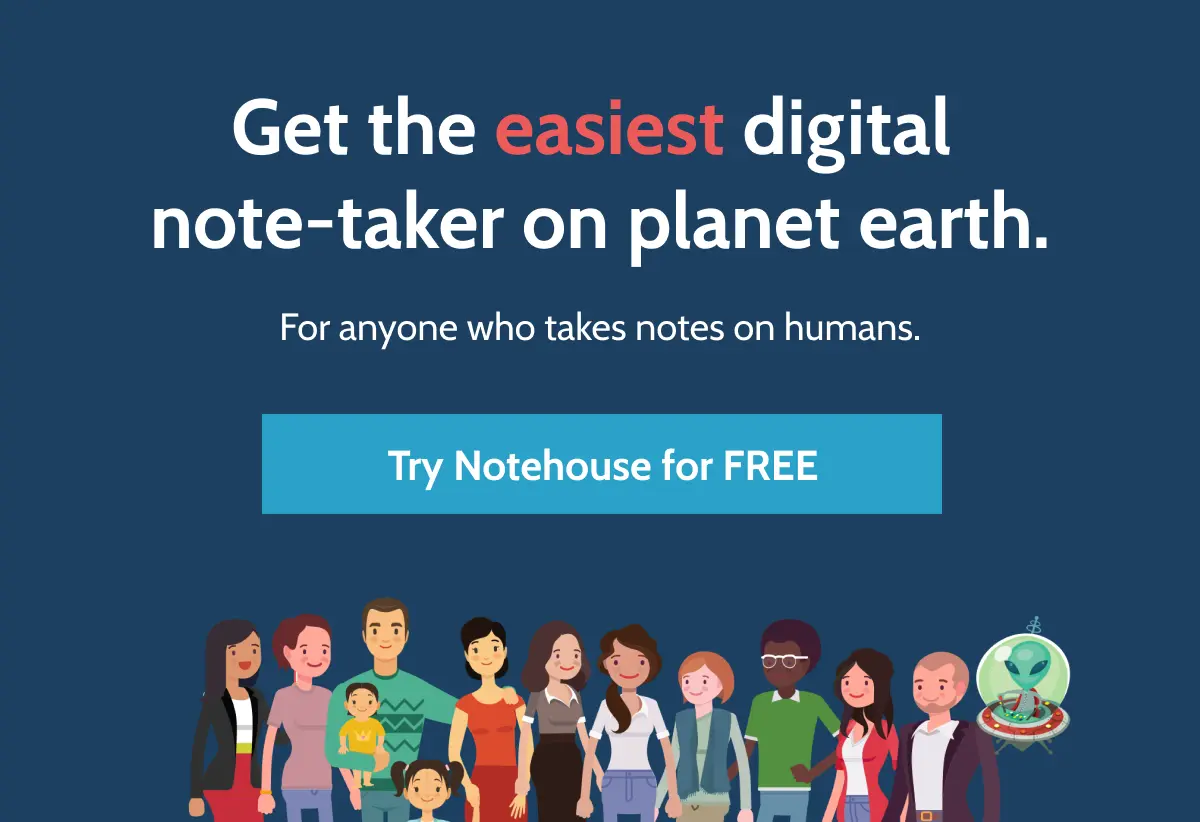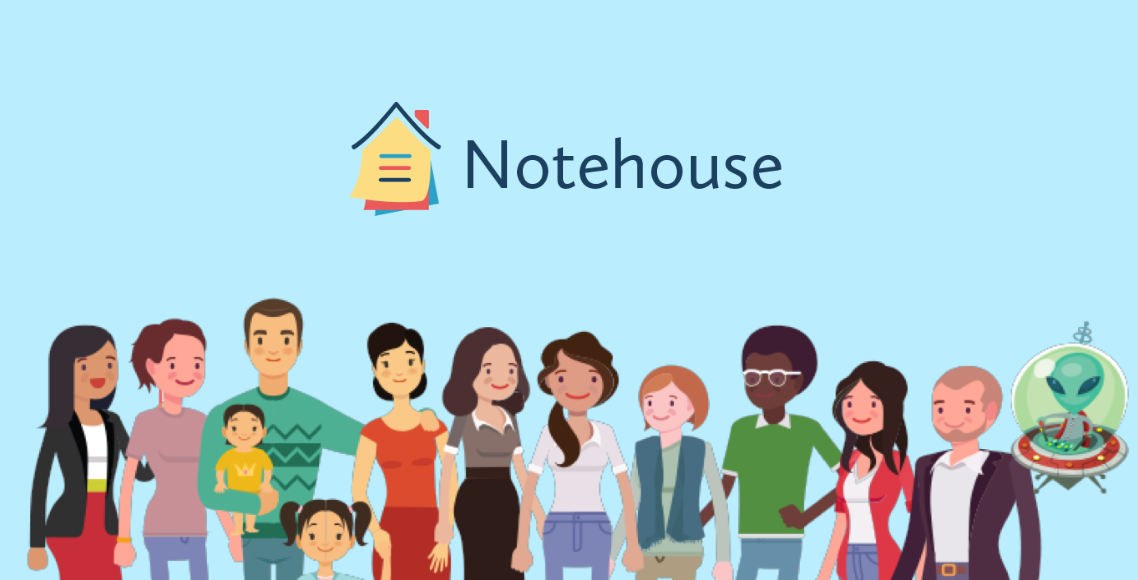How to Be a Good Client Meeting Note Taker: 5 Ideas to Try
.png.png)
Caring for your clients combines many different disciplines: expert communication skills, active listening, cultural awareness, and meticulous attention to detail. Yet, nothing pulls you away from the human in front of you like getting lost in your notes. A person-first meeting note taker doesn’t let recordkeeping overshadow their empathy. They balance their attention between the client and the content, keeping a close eye on the bigger picture.
But taking helpful client meeting notes and staying fully engaged? That’s tough even for master multi-taskers. That’s why we’re sharing some simple ideas that combine excellent note taking with authentic presence. These bite-sized tactics won’t disrupt your usual flow, and they can even fit into any note-taking system! Let’s dive into these 5 note-taking ideas you can start implementing today.
#1: Take the Notes Your Human Needs
Taking notes is a highly personal task that can also be incredibly challenging, and everyone develops a system that works for them. Some people prefer writing down as much as possible, and others create their own shorthand to get in all the information they need.
Whatever you do, it’s always valuable to reflect on the fact that, while your notes are for you, at the end of the day they’re also about the human in front of you. That means adapting your approach to capture the information that matters to them within your style, not the other way around.
It can take a lot of mental energy to keep up, especially if the conversation you’re having is high stakes. A child who is in an unfortunate situation or a woman dealing with an abusive relationship can seem overwhelming, and it’s critical to capture the important details accurately to help them as much as you can.
This is where technology can be your biggest ally. An excellent digital tool can take care of the organizing, searching, and sharing so you can focus your energy where it needs to be in the moment. Of course, no tool will ever replace that person-to-person contact and intuitive interaction that makes human connections so special. But by handling all the logistics for you on the fly, a digital note-taking system allows you to confidently take the notes you need, give your human your undivided attention, and trust that you don’t have to handle all the collating and formatting at the same time.
Oh, and those digital sticky notes? They never fall off in your bag, either!
#2: Use Intelligent Note-Taking Tools
Narrative-based notes excel at providing waypoints back to your last interaction, but it’s easy for them to become disorganized. If you struggle to reorient before a client meeting, it may be time to consider smarter tools. Notehouse is a note-taking platform that allows you to search, sort, and filter your notes using custom tags will give you an edge in organization—while saving you time and effort!
The beauty of a great note-taking app in a client meeting is that the most important information about them is always easy to access and won’t change unless you change it. Phone numbers, emails, first and last names, family members, and all sorts of pertinent information won’t get shuffled into a stack of papers, or written down (possibly differently!) in several different places you now have to remember. It stays exactly where you put it, and well-designed software that’s quick to learn will make sure you aren’t spending your meetings trying to figure out how to make it work for you.
#3: Make the Important Details Easy to Find
Vague notes aren’t helpful, and when you’re coordinating with a team it can be very difficult to get everything in a format that everyone is comfortable using. The reason we take notes is because the details matter, and names, places, dates, and crucial client information has to be accessible to the group with a minimum of fuss.
Note-taking software should be the extra player on the field that makes notes from a client meeting easy to process, and gives everyone the same framework for finding what they need to know. With a common, intuitive platform, your team can communicate less and understand far more about every situation they’re managing, regardless of who the meeting note taker might be.
#4: Read Other Team Members’ Notes
In many professions, reading your coworkers’ notes is typical practice. But paying close attention to their different styles and strategies can provide insights into more effective client meetings. That’s doubly true if you work in a tightly knit environment—learning how your colleagues think will help you communicate with them better, both within and outside your notes.
This also allows you to respond to concerns, learn about other professionals’ experiences, and follow up on client progress. Meeting note takers who share clients may wish to adopt a uniform style so that the notes tell a seamless story. Creating a straightforward narrative no matter who last interacted with them gives clients a sense of consistency and transparency.
It’s also helpful to ask team members whether your notes are useful to them. If you’re ever concerned about your note-taking methods, contact a supervisor or colleague and see what they think. Even though most coworkers won’t consult you unless your notes are illegible, many will be more than willing to offer pointers on clarity and structure.
#5: Focus on the Client First—Notes Come Second
No one likes feeling unheard. In your profession, you may have strict requirements around the kind of notes you must take and the information you must collect at each client meeting. But being a good meeting note taker isn’t just about the notes; it’s also about being present for the person in front of you.
Many clients will appreciate you simply acknowledging the barrier that notes can create: “Hi, Alex, bear with me while I set up my notes” is a much better way to begin your session than blankly staring ahead while typing.
If you ever catch yourself falling into this common pitfall, don’t sweat it. Clients can recognize that you’re human, too. Being honest with them about your divided attention (as long as you’re graceful) is a better alternative to ignoring it. You might say, “Sorry, Alex, I got caught up in the last point you made. Could you rewind a bit for me?”
Being vulnerable—within professional limits—not only shows that you’re a real person ready to listen and empathize, but it also demonstrates your attempts to connect beyond the structure of a client meeting. The stone-faced professional who barely budges may write highly detailed notes, but they’re rarely a “good meeting note taker” from the client’s perspective.
Be a Better Meeting Note Taker With Notehouse
What makes a fantastic client meeting? It’s different for each professional who meets with them. For a social worker, it could improve a client’s mental health. For human services, it might be a client’s new relationship or apartment. No matter what role you have, celebrating our clients’ successes is the best part of the job.
But when our notes separate us from those moments, they push back against our passion for change. That’s why Notehouse , the note-taking platform for client meetings, blends narrative-based notes with an intuitive interface to get you back on track, engaging with the human in front of you.
Visit Notehouse now to discover how our intelligent tool can empower you with limitless custom tags and ultra-easy organizational features!
.png)

.png.png)
.png.png)
.png.png)